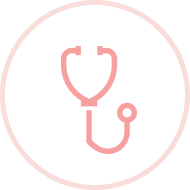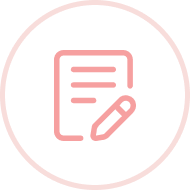FAQs
This consultation provides a comprehensive overview of potential risks and benefits.
Hormone Therapy
Experience improved energy levels and mood balance with a personalized, holistic approach to hormone therapy at Wasatch Wellness.
How Can I Benefit From Hormone Therapy?
Hormone therapy can alleviate or reduce a diverse set of common hormone imbalance symptoms. You should consider scheduling a consultation for hormone therapy if you get common symptoms like:
- Exhaustion
- Stress
- Foggy thinking
- Weight gain
- Sleep disturbances
- Low libido
- Hot flashes
- Vaginal dryness
- Pain during intercourse
- Night sweats
- Dry skin
- Insomnia
- Memory and concentration problems
- Hair loss
Hormone therapy can also reduce the risk for certain diseases that women are more likely to get after menopause, like osteoporosis. Our hormone specialists can give you a full idea of the benefits you enjoy with hormone therapy, according to your health risks.
Which Type Of Hormone Therapy Should I Take?
There are multiple ways that you can take hormones during hormone therapy, and the same method won’t be the best choice for everyone. During your treatment consultation at Wasatch Wellness, our providers will help you consider each option and choose what aligns with your preferences.
You can take hormone therapy in the following forms:
- Pills
- Skin patches
- Vaginal inserts
- Creams
- Sprays
- Pellets
For the best possible results from hormone therapy and minimal side effects, you should take the lowest possible dose of hormones to cause symptom relief and for the shortest amount of time. If you notice any side effects, be sure to let your provider know so she can adjust your treatment plan accordingly.
If hormone imbalance is affecting your mood, sleep, or wellness, call Wasatch Wellness for a hormone therapy consultation or book online today.
Hormone Pellets
Achieve optimal hormone balance and enhanced vitality with personalized hormone pellet treatments at Wasatch Wellness.
Is There More Than One Type Of Pellet?
Yes, there are two major pellet therapy types: estrogen pellets and testosterone pellets.
How Do Estrogen Levels Change With Age?
Estrogen levels in women decrease with age, especially during perimenopause and menopause. After menopause, some men may have higher estrogen levels than women. A radical hysterectomy removing both ovaries leads to a significant drop in estrogen, as the ovaries are the main source of this hormone. Adrenal glands and fat tissue produce some estrogen, but it is often not enough to maintain balance.
What Health Concerns May Estrogen Pellets Relieve?
Estrogen pellets are primarily used to combat the effects of menopause. Studies have shown that estrogen may also help relieve some symptoms associated with mood, bone density, and heart health.
What Blood Tests Are Required Before The Insertion?
We will conduct extensive lab work while considering a patient’s candidacy for BHRT using pellets. We can do the blood draw at clinic in preparation for your consultation and have results to review at your first appointment.
What Happens To Pellets After Insertion?
Since pellets are bioidentical and contain hormones like those our body produces, pellets are completely dissolved and absorbed, leaving nothing behind.
What Happens During The Week Following The Insertion?
After pellet insertion, it’s best to abstain from lower body exercise. Walking should be fine, but strenuous activity is not recommended. Avoid bathtubs, swimming and hot tubs ; however, showers are permitted. After removal of the bandage, normal activity may resume.
What Happens When Pellet Therapy Is Discontinued?
Every person’s body is different, but at the end of a pellet cycle or when stopping pellet therapy altogether, symptoms of fatigue, low mood and sleeplessness may recur. Typically, the patient’s symptoms will return to the same state prior to BHRT as their estrogen and testosterone levels begin to drop.
What Happens During The In-Office Insertion?
During the in-office visit, which only takes a few minutes, patients are brought into the exam room, and the insertion site is numbed. The most common site of insertion is the upper buttocks. A small incision is then made for pellet insertion. Once the pellet is inserted, the insertion site is covered with a small bandage.
What Is Estrogen?
Estrogen is a hormone that possesses many functions and occurs in the bodies of both men and women. In women, estrogen is commonly associated with reproduction—it prompts the menstrual cycle and develops the female body’s secondary sex characteristics. However, in both sexes, estrogen is responsible for many facets of bone health, cholesterol metabolism, and the thickness and collagen content of the skin.
What Are Estrogen Pellets?
Estrogen pellets are small cylinders that are custom compounded and composed of estradiol, a form of estrogen. Estrogen pellets may relieve emotional, reproductive, and non-reproductive symptoms. The most common administration for estrogen pellets is to help address the uncomfortable symptoms of aging in women.
How Long Do Pellets Last?
Pellets last up to three to six months depending on gender, weight, absorption rates, and the amount of deficiency or surplus of hormones present within the patient at the time of insertion. Pellets are reinserted between two to four times per year to help keep hormones optimized and balanced and may take up to two insertions before feeling the full benefits.
Is Fasting Required Before An Insertion?
No fasting is required in advance of the insertion.
What Is Testosterone?
Testosterone is a hormone normally found in both men and women that is responsible for many critical body processes. Testosterone is produced in the testes and ovaries, and deficiencies can occur in men and women as the body ages.
What Are Testosterone Pellets?
Testosterone pellets are composed of powdered testosterone fused into a pellet using stearic acid as a binding agent. The compounding pharmacies used by Biote provide high-quality pellets with ingredients that are meticulously tested. This testing process gives pharmacists, Biote Certified Providers, and patients confidence in the pellets’ quality.
What Health Concerns May Testosterone Pellets Relieve?
Testosterone has been shown to relieve a wide range of reproductive, emotional, and non-reproductive conditions. Some of these include low energy, sexual dysfunction, mood swings, irritability, and many others.
Weight Loss
Achieve a game-changing milestone in your weight loss journey with a customized approach.
How is Semaglutide Dosed?
Semaglutide comes as a single-use injection pen with a pre-set dose, used once weekly on the same day, with or without food. Inject it subcutaneously in the abdomen, upper arm, or thigh, rotating the site each time. It may cause nausea and vomiting by slowing stomach emptying. Your healthcare provider will gradually increase your dosage every 4 weeks to manage side effects, aiming for a target dose of 2.4 mg weekly.
- Month 1: 0.25 mg once weekly for the first month
- Month 2: 0.5 mg once weekly for the second month
- Month 3: 1 mg once weekly for the third month
- Month 4: 1.7 mg once weekly for the fourth month
- Target maintenance dose: 2.4 mg once weekly
Some people may not reach the target dose due to side effects. In such cases, the healthcare provider may wait another month before increasing the dose or may stop the medication if the target dose cannot be tolerated.
Are There Serious Side Effects to Semaglutide?
In some cases, Semaglutide may cause more serious side effects. The medication has a boxed warning — the FDA’s most serious warning — for a potential risk for thyroid C-cell tumors. This risk has been seen in animal studies, but it hasn’t been confirmed in people. Because of this, you shouldn’t take Semaglutide if you have a personal or family history of certain thyroid tumors.
Other serious side effects can include:
- Pancreatitis (inflamed pancreas)
- Cholelithiasis (gallbladder disease)
- Kidney damage
Low blood sugar (hypoglycemia) - Allergic reactions (including swelling of the face, tongue, or throat; difficulty breathing)
- Certain eye problems in people with Type 2 diabetes
- Fast heart rate
Suicidal thoughts and behaviors are another risk listed on the medication’s labeling because it’s been
reported with other weight loss medications. Let your healthcare provider know right away if you’re
experiencing any changes in mood or behavior, or if you’re having suicidal thoughts.
What Do We Know About Semaglutide Side Effects?
Gastrointestinal (GI) side effects tend to happen most frequently when taking this medication. The most common are nausea, diarrhea, and vomiting. You may experience these effects more strongly when your healthcare provider increases your dose.
Additional common side effects can include:
- Constipation
- Stomach pain
- Headache
- Fatigue
- Indigestion
- Dizziness
- Bloating
- Burping
Can I Take Other Medications While Using Semaglutide?
Since Semaglutide can lower your blood sugar, it can interact with other blood sugar-loweringmedications. Examples include insulin and medications that cause insulin to be released, like sulfonylureas. Combining these medications can result in dangerously low blood sugar levels.
If you’re taking one of these medications, your healthcare provider may lower the other medication’s dose while starting you on Semaglutide. And as a general rule, it’s important to diligently monitor your blood sugar if you have Type 2 diabetes. This is especially the case before and during treatment to ensure that your readings stay within a safe range.
Another potential interaction is with oral medications. Semaglutide slows down how quickly food leaves your stomach. This may affect how certain oral medications are absorbed by your body when they’re taken together. Your healthcare provider can determine which interactions potentially affect you and how to manage them.
What Else Should I Do to Help With My Weight Loss Journey While Using Semaglutide?
- Exercise! Incorporate a balanced exercise routine, including cardio and weight lifting, to support the maintenance of lean muscle mass.
- Consult with our nutritionist, Kelli Gray, who provides comprehensive dietary and nutritional guidance, including the option of a hair analysis. Kelli offers personalized consultations, starting at just $35, available on a weekly or monthly basis.
- Look at the broader picture of your health journey. For some patients, their journey to feeling healthy and their best goes beyond weight loss to underlying causes such as hormone imbalance. Consider a consultation with our hormone providers.
Chronic Disease Management
Helps manage symptoms, prevent complications, and improve quality of life.
What Are Common Chronic Disease Signs And Complications?
Chronic diseases can have a widespread impact on your well-being. Taking note of your symptoms helps Cameryn make an accurate diagnosis. She might also suggest blood tests or imaging tests for more definitive answers.
Your chronic disease may cause:
- Chronic pain
- Sleep disturbances
- Mobility limitations
- Reductions in strength and endurance
- Breathing difficulties
- Fatigue
- Weakness
By sticking to a personalized treatment plan, you can improve your symptoms and prevent new health complications from developing, such as diabetic neuropathy.
Are There Serious Side Effects to Semaglutide?:
Managing chronic diseases requires a personalized wellness plan with an emphasis on a healthy lifestyle. Your chronic disease care plan at Wasatch Family and Women’s Wellness might involve:
- Nutritional guidance and lifestyle changes:
A structured, healthy diet can significantly impact how you feel and reduce chronic disease effects. Cameryn can also assist with quitting smoking, improving sleep, increasing exercise, and other beneficial changes. - Medications:
Some medications help with specific symptoms, while others target the disease mechanism. Cameryn explains how your medications will help you in detail. - In-office treatments like injections and physical therapy can also make a positive difference as part of your chronic disease management plan.
If you have symptoms of a chronic disease or would like to improve your pre-existing care plan, book an appointment by phone or online at Wasatch Family Women’s Wellness today.
Next steps
Get the care you need when you need it, whether
it’s a routine checkup or a more urgent matter.

Schedule a consultation to ask about specialized pricing and learn more about Wasatch Wellness

Chat with a provider about personalized treatment,
payment, and insurance.

Get the care that’s right for you, from birth control options to hormone therapy for menopause.

Review notes from your provider through our patient portal. Book your yearly exam ahead of time.
